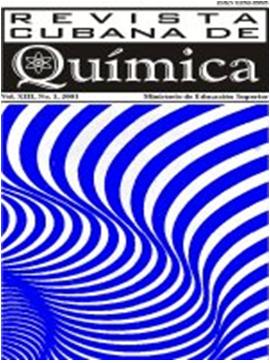Mezclas del nylon 6 y 11 con una poliesteramida derivada de los ácidos tartárico y succínico
Abstract
El trabajo tiene el propósito de estudiar las propiedades mecánicas y la compatibilidad de mezclas binarias obtenidas a partir de la poliamida 6 y la poliamida 11, conuna poliesteramida derivada de los ácidos tartárico y succínico, con contenido en éster del 10 %. Se ha tratado de obtener un nuevo material, combinando las características mecánicas de las poliamidas comerciales con la degradabilidad de la poliesteramida para su uso con fines biomédicos, en hilos de sutura. Las mezclas se prepararon por fusión y la compatibilidad se evaluó por microscopía óptica. Mediante ensayos de tracción se obtuvieron las propiedades mecánicas de estos sistemas. Las características mecánicas de las mezclas obtenidas se encuentran disminuidas respecto al valor promedio de los componentes, lo que verifica la incompatibilidad observada por microscopía óptica; este comportamiento se corresponde con sistemas poliméricos incompatibles, lo que limita su utilización con fines biomédicos.
Palabras clave: mezclas binarias, poliamida 6 y 11, poliesteramida, compatibilidad, propiedades mecánicas.
References
KULSHRESHTHA, A. K; VASILE, C. Handbook of polymer blends and composites. Ed. Rapra Technology Ltd.Shawbury, Shrewsbury, Shropshire, SY4 4NR, United Kingdom, 2003. ISBN: 1-85957-309-6
ROBESON, L. M. Polymer Blends. A Comprehensive Review. Ed. Carl Hanser Verlag Gmbh & Co. Munich, Germany, 2007.ISBN: 978-3-446-22569-5.
UTRACKI, L. A. Polymer blends handbook. Vol. 1. Published by Kluwer Academic Publishers. Dordrecht, TheNetherlands, 2002. ISBN: 1-4020-1110-5.
BOU, J. J. Síntesis y caracterización de poliamidas derivadas del ácido tartárico. Tesis Doctoral,Universidad Politécnica de Cataluña, España, 1994. Disponible en:https://upcommons.upc.edu/bitstream/handle/2117/93784/TJBS3de3.pdf Consultado: enero - 2018
PÉREZ RODRÍGUEZ, A. T. et. al. “Poly (ester amide)s derived from tartaric and succinic acids: changes in structure and properties upon hydrolytic degradation” Journal of Applied Polymer Science. 2000, 78, 486-494. ISSN: 0021-8995
VIVAS DE MEFTAHI, M.; FRÉCHET, J. M. J. “Study of the compatibility of blends of polymers and copolymers containing styrene, 4-hydroxystyrene and 4-vinylpyridine”. Polymer.1988, 29, 477-482. ISSN: 0032-3861
CHAN, C. H., KUMMERLÖWE, C., KAMMER, H. W. “Crystallization and melting behavior ofPoly(3-hydroxybutyrate)-based blends”. Macromol. Chem. Phys.2004, 205, 664–675.ISSN: 1022-1352
ZHANG, K., MOHANTY, A. K., MISRA, M. “Fully biodegradable and biorenewable ternary blends fromPolylactide, Poly(3-hydroxybutyrate-co-hydroxyvalerate) and Poly(butylene succinate) with balanced properties”. ACS Appl. Mater. Interfaces. 2012, 4, 3091−3101.ISSN:1566-2543
PACHEKOSKI, W. M.; MARCONDES AGNELLI, J. A.; BELEM, L. P. “Thermal, mechanical and morphological properties of Poly(hydroxybutyrate) and Polypropylene blends after processing”. Materials Research. 2009, 12 (2), 159-164. ISSN:1516-1439
OLABISI, O. “Interpretations of polymer-polymer miscibility”. Journal of Chemical Education. 1981, 58 (11), 944-950.ISSN:0021-9584
LEE, J. C.; TAZAWA, H.; IKEHARA, T.; NISHI, T. “Miscibility and crystallization behavior of Poly(butylene succinate) and Poly(vinylidene fluoride”. Polymer Journal. 1998, 30 (4), 327-339.ISSN:0032-3861
PEIXIANG XING, L. D. et. al. “Miscibility and crystallization of Poly(β-hydroxybutyrate) and Poly(p-vinylphenol) blends”. Macromolecules. 1997, 30, 2726-2733. ISSN: 0024-9297
PAPAGEORGIOU, G. Z.; GRIGORIADOU, I.; ANDRIOTIS, E.; BIKIARIS, D. N.; PANAYIOTOU, C. “Miscibility and properties of new Poly(propylene succinate)/Poly(4-vinylphenol) blends”. Ind. Eng. Chem. Res. 2013, 52, 11948−11955.ISSN:0888-5885
XINYA, L.; WEISS, R. A. “Relationship between the glass transition temperature and the interaction parameter of miscible binary polymer blends”. Macromolecules. 1992, 25, 3242-3246. ISSN: 0024-9297
KUO, S. W.; CHANG, F. C. “Studies of miscibility behavior and hydrogen bonding in blends of Poly(vinylphenol) and Poly(vinylpyrrolidone)”. Macromolecules.2001, 34, 5224-5228.ISSN: 0024-9297
SCHNEIDER, H. A. “Glass transition behavior of compatible polymer blends”. Polymer.1989, 30, 771-779. ISSN: 0032-3861
KRAUSE, S. “Compatible polymers”. En: BRANDRUP, J. et al.Polymer handbook. New York: Wiley, 1989, pp. 347-370. ISBN: 0-471-81244-7.
FOX, D.; ALLEN, R. B.“Compatibility”. En:BEACH, W. F. et al.Encyclopedia of Polymer Science and Engineering.New York: John Wiley & Sons.vol. 3, 1989, pp. 758-775. ISBN: 0471887897
CHAN, C. H.; KAMMER, H. W. “Thermal properties of blends comprisingpoly(3-hydroxybutyrate-co-3-hydroxyvalerate) and epoxidized natural rubber”. Polym. Bull. 2009, 63, 673–686.ISSN: 0170-0839
BUTHAINA, A. I.; KARRER M. K. “Influence of polymer blending on mechanical and thermal properties”. Modern Applied Science. 2010, 4 (9), 157-161. ISSN: 1913-1852
KANG, T. K. et. al.“Properties of Poly(Butylene terephthalate)/functionalized polyolefin blends”. Polymer Engineering and Science. 1997, 37 (3), 603-614. ISSN:1548-2634
VAIDYA, U. R.; BHATTACHARYA, M.; ZHANG, D.“Effect of processing on the dynamic mechanical properties of starch and anhydride polymer blends”. Polymer. 1995, 36 (6), 1179-1188. ISSN: 0032-3861
ELLIS, T. S. “Influence of structureonphasebehavior of polyamideblends”. Macromolecules. 1991, 24 (13), 3845–3852.ISSN: 0024-9297
ELLIS, T. S. “Mixingrelationships in aliphaticpolyamideblends”. Polymer.1992, 33 (7), 1469-1476.ISSN: 0032-3861
ELLIS, T. S. “Miscibility of polyamideblends: effects of configuration”. Polymer.1995, 36 (20), 3919-3926.ISSN: 0032-3861
PÉREZ RODRÍGUEZ, A. T. et. al. “Propiedades de mezclas obtenidas a partir de poliamidas y poliesteramidas derivadas de los ácidos tartárico y succínico”. Rev. Cubana de Química. 2018, 30 (3), 505-521. ISSN: 2224-5421
ELIAS, H. G.; SCHUMACHER, R. “Über das Lösungsverhalten von Nylon 6,6”. Makromolekulare Chemie. 1964, 76, 23-53.ISSN: 1521-3900
TURI, E. A. Thermal Characterization of Polymeric Materials. 2nd Edition.New York: AcademicPress, 1997. ISBN: 0127037837
ASTM D3418-15: Standard Test Method for Transition Temperatures and Enthalpies of Fusion and Crystallization of Polymers by Differential Scanning Calorimetry. ASTM International. West Conshohocken, PA, 2015.
ASTM D882-12: Standard test methodfortensileproperties of thinplasticsheeting. American SocietyforTesting and Materials. ASTM International. West Conshohocken, PA, 2012.
ASTM D1708-13: Standard Test Methodfor Tensile Properties of Plastics by Use of Microtensile Specimens, ASTM International. West Conshohocken, PA, 2013.
Downloads
Published
How to Cite
Issue
Section
License
This journal provides immediate open access to its content, based on the principle that offering the public free access to research helps a greater global exchange of knowledge. Each author is responsible for the content of each of their articles.























